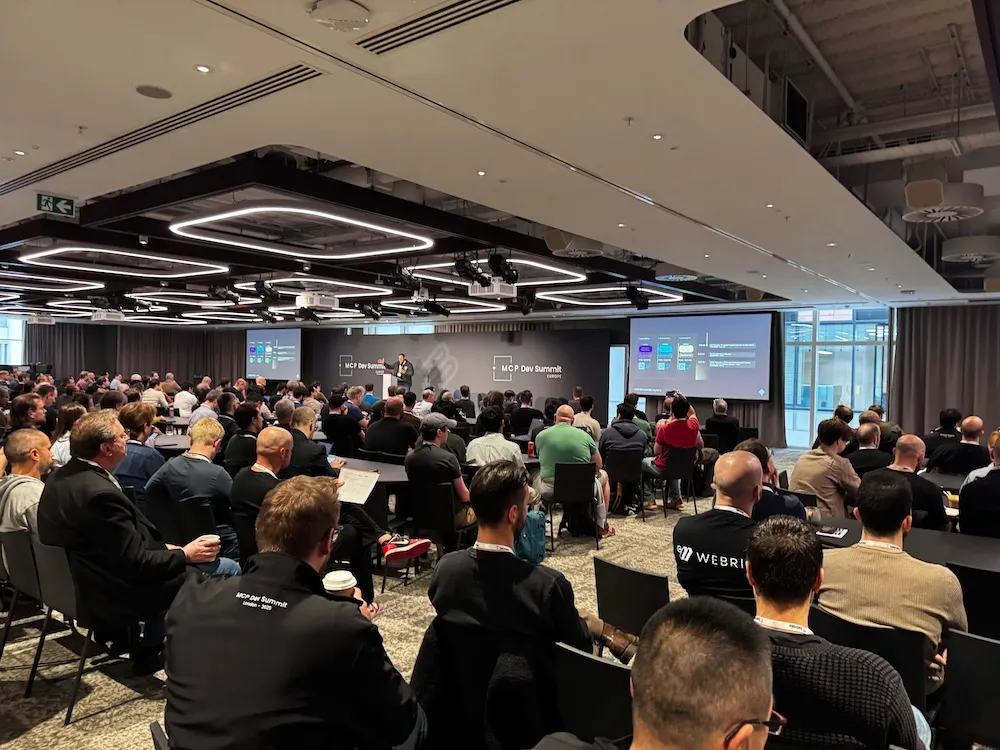I just returned from the MCP Summit in London and here is my quick summary. Yes, we already have the summit of a tech that’s not even a year old — well, things are moving fast in the AI world. The event was filled with lots of interesting ideas and updates about the state of the ecosystem, and here are topics that I found most interesting.
From a product engineer perspective, the most interesting topic is the MCP UI project. It’s a protocol designed to enrich the wall of text produced by LLMs with visual components from your platform, such as product cards (already part of the Agentic Commerce concept), an embedded map widget with hotels you want to book, or your upcoming calendar events. This opens up a way of interacting with the web through AI, where the chatbot holds the entire context (fetched via a set of MCPs). Forget juggling 20 Chrome tabs to book a hotel, a flight, and everything else for your trip — instead, imagine one agent conversation that contains all the context.
From a technical standpoint, there were many discussions about how to structure tools in MCP servers, and how many tools to expose. Practice shows that the more tools you expose, the worse LLM performance gets. A few solutions were discussed, such as a layered tool architecture. Instead of exposing every tool in the first tools/list call, you could let the LLM explore what’s available. For example, instead of wrapping each API endpoint as a tool, you expose more generic tools like “discover,” “plan,” and “execute,” and let the LLM figure out which endpoints to use — then make all calls in a single tool.
We also heard an update from one of MCP’s co-creators about the spec itself. The protocol is evolving quickly, with a new version expected by the end of November. The main areas it will address are long-running async tasks and statelessness — making the protocol stateless by default for easier deployment and scaling (without worrying about client-server session stickiness).
Since Anthropic announced MCP, more than 10k servers have been created in just a few months. To unlock the full potential of this growing ecosystem, ideas for a central MCP registry are being explored. The goal is to allow LLMs to discover MCPs themselves instead of having to plug them in manually.
That’s about it — MCP Summit was a fantastic event and much larger than I expected. It was packed with ideas and made it clear we’re still in the early, exciting days of building new standards. There’s a running joke that MCP has more builders than actual users — maybe true for now, but I see it more as a foundational building block for richer, more immersive AI experiences. BTW — the next MCP Summit is already planned for April 2026 in New York.
